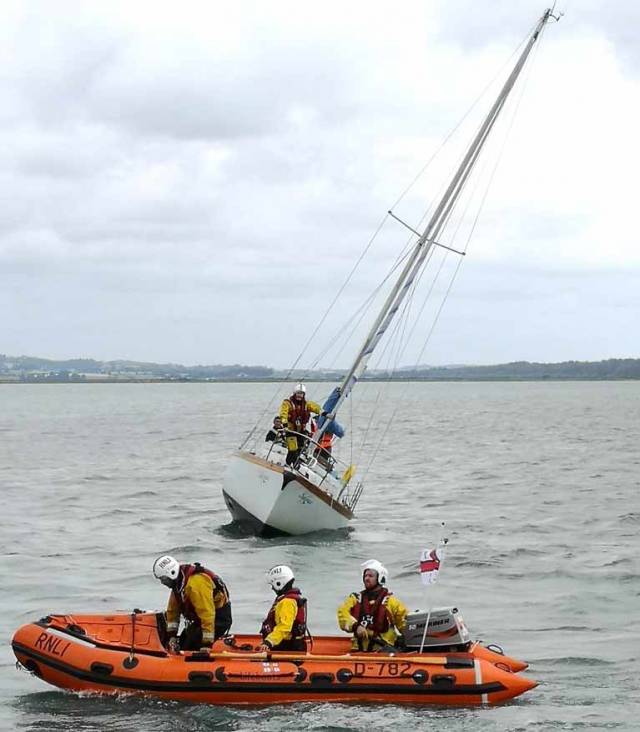Volunteer lifeboat crew at Wexford RNLI were called out three times over the weekend. On Saturday (14 July), the crew were launched at 6:25 pm to a motorboat adrift with engine failure in the Slaney Estuary. The second callout came on Sunday morning at 10:05 am for a yacht aground near the Fort sandbank at the entrance to Wexford Harbour. The final callout was at 7:14 pm on Sunday when the lifeboat launched to attend to the same yacht that had gone aground earlier in the day.
For the first call out the lifeboat crew comprised Peter Scallan (Helm), Frank O’Brien and Robbie Connolly, who took the five-metre powerboat under tow delivering it back to Wexford Quay with the two people on board safe and well. The Coast Guard was alerted by friends of the motorboat’s crew becoming concerned and calling the Coast Guard. Conditions were good with a moderate south-westerly breeze and good visibility.
The callout to the grounded yacht at the entrance to Wexford Harbour saw the lifeboat under the command of John Michael Murphy with crew Frank O’Brien, Robbie Connolly and Joanna Reid. An eight-metre sailing yacht with five people on board was hard aground on a sandbank just north of the navigation channel. The lifeboat transferred four of the yacht’s crew to the fishing vessel Laura Anne which was standing by to assist. Given the falling tide, it was not possible to tow the yacht successfully off the sandbank. The yacht’s skipper and the lifeboat crew secured the anchor on a long chain leading into deep water and left the yacht in position to await high tide later in the day.
The third callout with helm Frank O’Brien and crew Peter Scallan, Robbie Connolly and Joanna Reid on board, set out from the RNLI station at Wexford Bridge to the sounds of French football fans celebrating their World Cup win on the street outside the Lifeboat Station. The rising tide presented an opportunity to free the yacht from the sandbank, as leaving it there would present a hazard to navigation and a danger to other users of the harbour. With fishing vessels Laura Anne and Aisling J in attendance, the lifeboat put the skipper of the yacht back on board, along with volunteer lifeboat crew Peter Scallan. With some manipulation of the anchor and the assistance of the lifeboat, the yacht eventually broke free of the sandbank and was able to motor back to Wexford Quay under its own power.
Volunteer RNLI helm Frank O’Brien said ‘thankfully nobody was injured in either incident due to the lifeboat being called promptly, preventing unpleasant experiences becoming emergencies. If you are in difficulty or see somebody in difficulty on or near the water, call 112 or 999 and ask for the Coast Guard’.































































